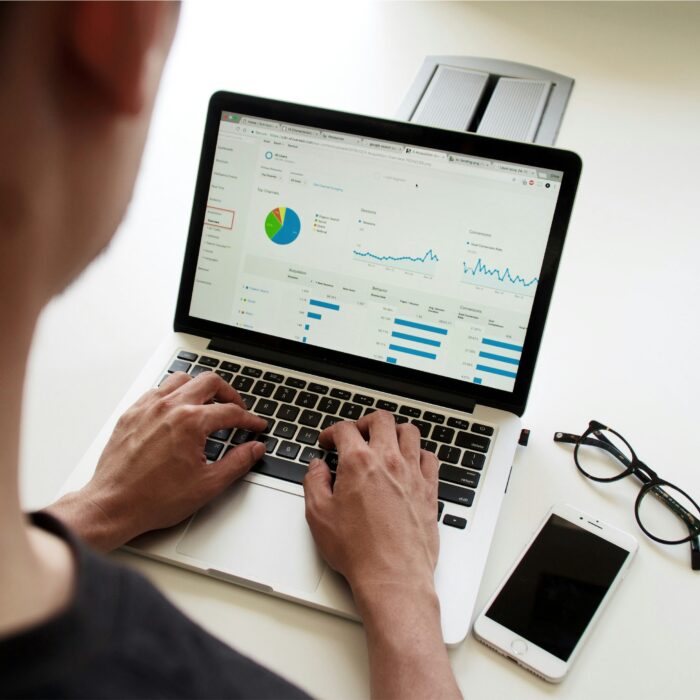Five questions to ask before going multichannel
by November 1, 2024
E-commerce is booming. There are endless ways to buy and sell products, and the sales channel options are beginning to feel unlimited.
If you’re a seller, you’ve probably at least considered going multichannel. But you may also have been overwhelmed at the prospect of doing so. Without an idea of where to start, you may even have given up.
Don’t give up! Selling on multiple channels is a guaranteed way to grow your business. Here are five questions you should ask and answer for yourself before going multichannel:
1. Why should I do this?
For those of you who may be hesitant about the idea of going multichannel or may be wondering to yourself if it’s really worth all the trouble, there are a few things you need to know.
Sales potential in going multichannel is irrefutable
If you’re a seller, there are probably a lot of reasons you do what you do. But, when it comes down to it, sales really do take precedence over all else and are what allow you to continue your business.
Multichannel allows you to reach customers who never would have found you if not for your presence on a marketplace. Growing your customer base is likely a constant concern, and there’s no easier way to do this on a large scale than by embracing the multichannel option.
According to an Internet Retailer study, “nearly $100 billion was transacted on marketplaces in the United States in 2015.” There are sales and profits to be found here, and if you’re truly looking to grow your business, it’s hard to ignore the evidence that this is the way to go.
It really isn’t as hard as you think
With the amount of business being done this way, you can bet the marketplaces have set up systems that are as user-friendly as possible. As you contemplate expanding your business, one action step you can take is to look at all your options and choose the system(s) that feels easiest and most intuitive to you.
Also, there are a plethora of fantastic resources online to help guide you through the process of turning your business into a multichannel one. Don’t go it alone and think you have to figure everything out for yourself. Read as much as you can from those who have gone before you and made mistakes so you don’t have to.
Your competition is already doing it
If you want to continue having a stake in the game, you’ll need to begin as well. Your customers will expect it, and if you don’t give them the options they can find elsewhere, they’ll no longer be your customers.
Furthermore, if you don’t have a multichannel presence, your competition will be snatching up all those new potential customers, so you’ll not only be losing existing customers, you’ll also be missing out on gaining new ones. According to an Internet Retailer report, a consumer survey shows that 65% of customers say they feel comfortable purchasing from a new retailer on a marketplace.
The exponential growth found in marketplaces is evidenced in the increasing GMV (gross merchandise value) for many of the major sites. Amazon and Etsy saw growth of 22.6% and 23.8%, respectively, in their GMVs from 2014 to 2015, and newer sites likes Bluefly and Farfetch saw GMV growth of 40.8% and 72.4%, respectively.
Knowing the type of sales growth potential that’s out there, the “why” of going multichannel hardly feels like a valid question anymore, does it?
2. Where do I start?
You may have already gotten to this point, but a lack of direction in how to start is what’s been holding you back. As I said above, it is easier than you think, but everyone needs a little guidance when they’re first starting out.
Choose your channel
There are plenty of good options out there, but that doesn’t mean any and every option is the right fit for you. It all depends on your niche and workflow.
Do you build to order? You’ll want to look into Etsy. Do you sell auto or machine parts or apparel items? eBay is your best shot. Are you selling electronics? Amazon and Newegg are the sites for you.
Do some research on which sites are the best fit for your specific type of business, and make sure to look at what similar sellers are doing to promote and sell their products.
Budget some time
Don’t be afraid to start small and just post a few products to help cushion the learning curve. Don’t expect a windfall overnight, but do expect to invest a significant amount of time. You’re effectively launching an entirely new business unit, after all. And you would never launch a new business without fully expecting it to require a good chunk of your time, at least for a while.
3. Which tools do I need to help me?
Inventory Management
Managing inventory is the most difficult challenge of multichannel selling and carries the biggest consequences if not executed well. Overselling is the #1 reason merchants lose their selling privileges—and, ultimately, their business.
Sellbrite is a multichannel inventory management tool that eliminates the risk of overselling by automatically adjusting your inventory across all listings, so you don’t get into hot water selling merchandise you’ve already sold.
For a more enterprise or warehouse kind of operation, SkuVault is an excellent tool. It offers advanced warehouse functionality like barcoding, multi-bin location management, and more.
Reporting
Data and analytics are one of the most important ingredients to being successful in the eCommerce world. Which you probably already know. But as you expand into multichannel, this can get more complicated. Fortunately, there are some valuable reporting tools to help you as you grow.
Compass.co will help you gather all your data in one place without fuss and then evaluate your data in context to all your channels.
RJ Metrics can help you build a data infrastructure and analytics software to make you savvier when it comes to the data you already have and the data you might have been missing. They offer both a Pipeline product, for the infrastructure side of things, and a CloudBI product, for the collaboration and analysis side of things.
Segment calls itself a customer data hub. It collects your data and translates it for you in an actionable way by sending it through a variety of tools related to analytics, marketing, and data warehousing.
Accounting
Quickbooks or Xero are key platforms to handle your accounting. Quickbooks calls itself the #1 small business accounting software, and Xero is an online accounting software alternative to Quickbooks, so it’s really a matter of which is the best fit for you.
One area merchants often overlook is tax management, and for that, there’s TaxJar. TaxJar’s focus is to make sales tax reporting and filing for online retailers as painless as possible. The reports are automated in each state, and seamlessly connects to your marketplaces and carts. Connecting to the platforms and channels you use can be as simple as one click.
Listing
This isn’t necessarily essential, but a tool that helps you list your products to each channel will make your life much easier and help remove the barrier to going multichannel. Especially if you have lots of inventory to sell, this is the kind of tool that can help save you from headaches.
Sellbrite, in addition to managing your inventory quantities, also has the ability to import products from your existing sales channel and prepare them to be listed on other channels. As you might imagine, this will save you a ton of time because you’ll be able to use the work you already did rather than doing the same work over and over for every channel.
Repricing
An important tool for Amazon sellers is a repricing system. There isn’t a one-size-fits-all option, so you’ll want to look into the best system for you. However, we have a couple suggestions for you as you start out.
If you’re looking for a simple, more streamlined option at a more affordable rate, Appeagle is a nice choice. Appeagle has automated repricing, algorithms to help you win the buy box, and gathers data to help give you insight on what is successful for your business.
Wiser is a more high-end option that goes beyond a basic repricing tool. It will scan different websites and marketplaces to ensure you have the right price. It’s very customizable and really help you zero in on comparison to your competition. It offers valuable data mining, automation and optimization for pricing, and insights to help you better price as you go on.
4. How do I optimize for success?
When you’re optimizing on your website, you have a lot of control and have free rein to do whatever you’d like. You can get really creative with great GIFs and images from Hootview or clever storytelling descriptions.
When it comes to eBay and Amazon, though, you’re much more limited on what you can do. Which can be both a good and a bad thing.
Here are some tips for optimizing those listings in a more controlled environment:
Understanding the algorithm
Although the algorithm is similar to Google’s in that it isn’t disclosed, many people believe conversion rates are at the top of the algorithm. Conversion, or sell-through, rate is the percentage that reflects the number of sales of your product per click. The higher the conversion rate, the better, because eBay and Amazon are as focused on profit as you are. The listings that have proven to convert the most customers are going to end up at the top of the search results because that is the most likely way, according to the algorithm, eBay or Amazon and you will see money coming in.
This is especially important on eBay, where listings that are older with lots of history always show higher in search rankings. Yet another good reason to use inventory management software to keep listings alive while out of stock (a feature eBay calls Out of Stock Control), and reactivate them when stock returns.
Optimizing titles and descriptions
Titles for your listings are subject to SEO in the same way your website is. You want to make sure your titles include the right keywords to show up for the kinds of searches more likely to lead to a sale of your product. Be as clear and informative as possible while also making the title easy for shoppers to read. And be careful that you’re not competing with your own website’s SEO title!
Much of the above is also true for product descriptions. You’ll want your descriptions to also be optimized for what people are actually searching for. If your description includes the types of keywords people are most likely to use, you conversion rate is going to increase, and you’ll start showing up higher in the rankings.
Getting positive reviews
As we all know, consumers are very much inclined to read reviews. Savvy shoppers are more likely to trust what other customers are saying about a product than what the seller tells them. So, highlighting your positive feedback should be a priority. Customer reviews and ratings should be front and center, and don’t hesitate to show them off so potential customers will have yet another barrier removed in their purchasing decision.
Taking better photos
Finally, high quality images are a must when it comes to optimizing your product listing. They are one of the top factors customers consider as they view your product. It’s important to include more than one image, that the product be the focus of each image, and that the quality of those images be good. In this highly visual culture, the image may very well be the first thing the customer sees in the search results and the first thing he or she looks at after clicking on your listing.
5. What else do I need to know?
Do your research
Educate yourself on the available channels and know what each offers. You may be better equipped to handle Etsy or eBay, even if your first instinct is to rush to Amazon. If you can’t handle a larger marketplace like Amazon, you’ll jeopardize your selling privileges and your multichannel attempts may be over before they’ve barely begun.
Follow the rules
Each channel has different rules and regulations. Make certain you know what these are for every channel you are present on and obey them! You have to earn top-rated seller status, and you won’t do that by trying to cheat the system or breaking the rules. Don’t shoot yourself in the foot; a high seller score is essential, and you may not get that if you don’t follow the rules of the marketplace.
Go slow, be patient
The biggest issue I see people running into is expecting overnight success. Go into multichannel knowing there is work involved and you’ll need to put in your time to see results. Every busy seller knows time is the most precious resource, and you’ll need to be prepared to invest a lot of it into each channel you brand out into. Trust me, that patience and extra work will be rewarded and is well worth the effort!
These tips come courtesy of our friends at Sellbrite.








